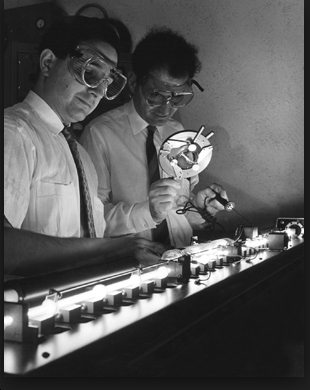- Related articles
- All Cisco DWDM-XFP-42.14's information (List price, Specs, Datasheet PDF, Compatibility ma
- Optical Transceivers for Cisco WS-C3560CX-8XPD-S Switch
- Optical Transceivers for Cisco ME-3600X-24TS-M= Switch
- Cisco 10GBASE SFP+ Modules Overview
- The compatibility and difference between PCI PCI-X and PCI-E
- Optical Transceivers for Cisco SLM2016T-UK Switch
- Optical Transceivers for Cisco SF500-48-K9-G5 Switch
- The Difference between SFP+ and X2
- All Cisco ONS-SI-622-I1's information (List price, Specs, Datasheet PDF, Compatibility mat
- All Cisco XFP-10G-MM-SR's information (List price, Specs, Datasheet PDF, Compatibility mat

Who made fiber optic cable?
In 1970, Corning Glass researchers Robert Maurer, Donald Keck and Peter Schultz invented fiber optic cable or "Optical Waveguide Fibers" (patent #3,711,262) able of carrying 65,000 times more information than copper wire, through this cable, information carried by a pattern of light waves could be translated at a destination even thousand miles away.
At the time the application of fiber optic cables started the historic development to commercialization with the invention of more fiber optic materials and methods.
Fiber optic cable history
Even though the fiber optic cable was invented by Corning researchers, the concept of fiber optics was known earlier. There are also many other events and people earlier and later that make contributions to the generation of fiber optic cable.
Here is the brief process of invention of fiber optic cable:
In 1854, John Tyndall demonstrated that light could be conducted by a curved stream of water, proving that a light signal could be bent.
In 1880, Alexander Graham Bell invented his 'Photophone,' which transmitted a voice signal on a beam of light. But many things interfering with the Photophone, caused Bell to stop any further research with this invention.
In 1880, William Wheeler invented a system of light pipes lined with a highly reflective coating that illuminated homes by using light from an electric arc lamp placed in the basement and directing the light around the home with the pipes.
In 1888, the medical team of Roth and Reuss of Vienna used bent glass rods to illuminate body cavities.
In 1895, French engineer Henry Saint-Rene designed a system of bent glass rods for guiding light images in an attempt at early television.
In the 1920's, Englishman John Logie Baird and American Clarence W. Hansell patented the idea of using arrays of transparent rods to transmit images for television and facsimiles respectively.
In 1930, German medical student, Heinrich Lamm was the first person to assemble a bundle of optical fibers to carry an image.
In 1964, a critical (and theoretical) specification was identified by Dr. C.K. Kao for long-range communication devices, the 10 or 20 decibels of light loss per kilometer standard. Kao also illustrated the need for a purer form of glass to help reduce light loss.
In 1970, Corning Glass researchers Robert Maurer, Donald Keck and Peter Schultz invented fiber optic wire or "Optical Waveguide Fibers" (patent #3,711,262).
In 1975, the United States Government decided to link the computers in the NORAD headquarters at Cheyenne Mountain using fiber optics to reduce interference.
In 1977, the first optical telephone communication system was installed about 1.5 miles under downtown Chicago, and each optical fiber carried the equivalent of 672 voice channels.
By the end of the century, more than 80 percent of the world's long-distance traffic was carried over optical fiber cables and 25 million kilometers of the cable Maurer, Keck and Schultz designed has been installed worldwide.
Why do we use fiber optic cable?
Fiber optic cables are broadly used instead of traditional metal wire because its outstanding advantages bring great convenience and efficiency in communication and other technology, which pushed the improvement of society.
Conclusion
Knowing about the history of fiber optic cable is helpful to understand better the fiber optic communication technology and products. This article gives knowledge from a historical view to understand the fiber optic communication.






































































